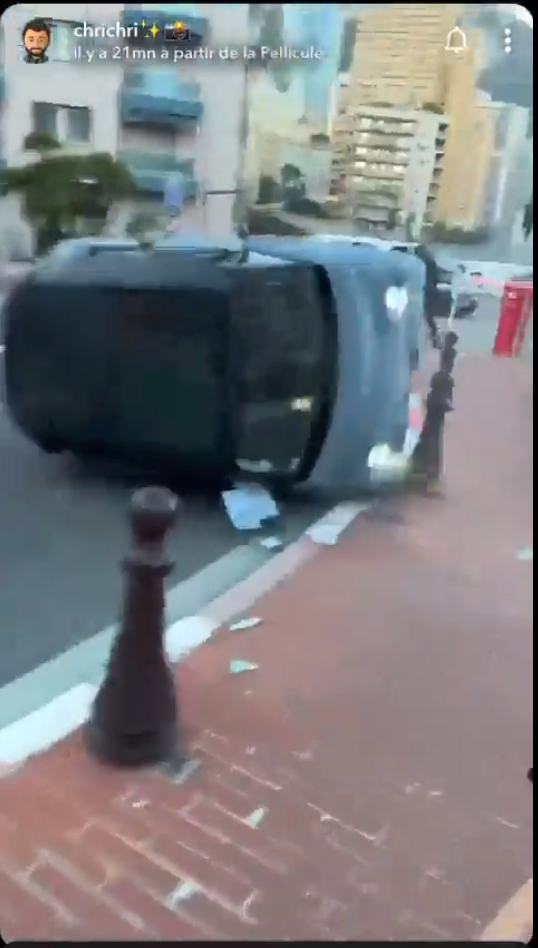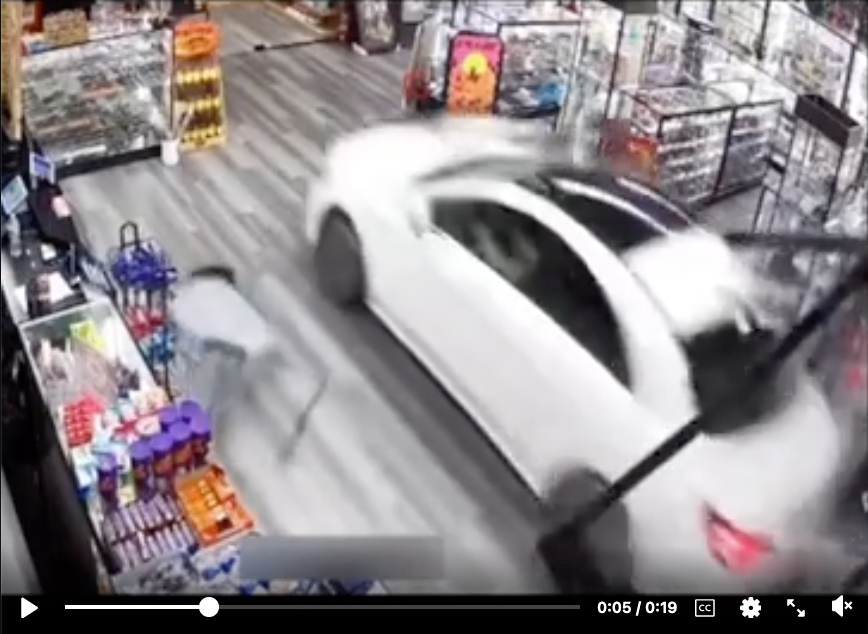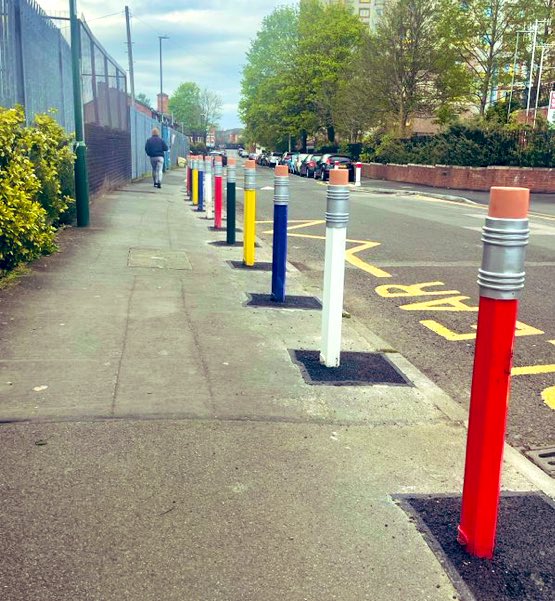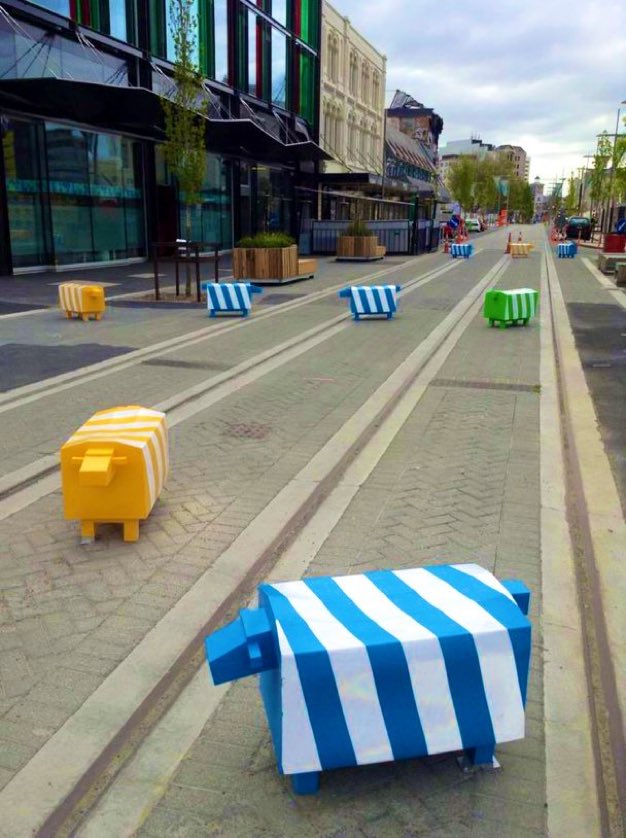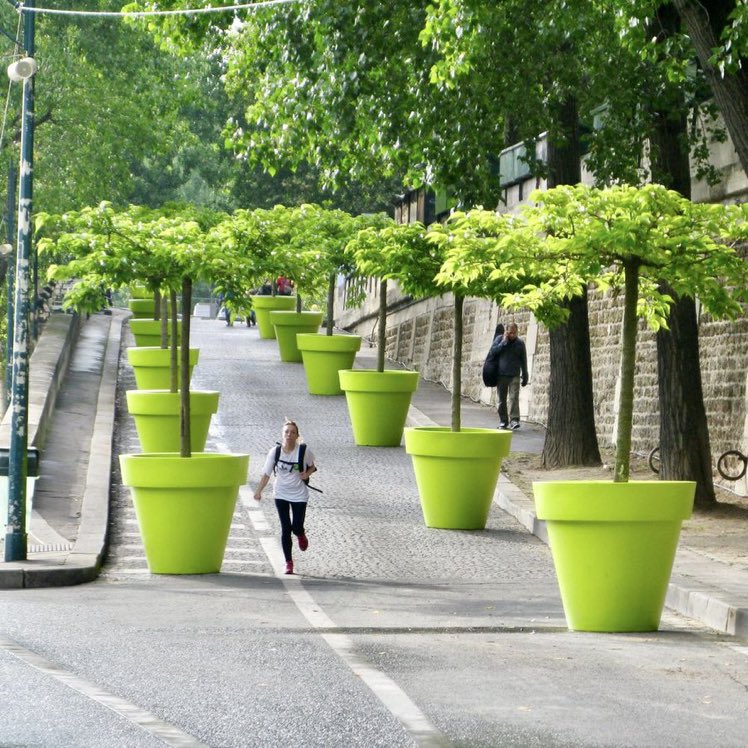Bollards: Why & What
Article Table of Contents
- What are bollards
- What are not bollards?
- Injury on 7-Eleven property costs $91 million
- What does not bollards look like
- “But what I think of as bollards are not pretty”
- 17th ave intersection fix with bollards and a traffic bean
- Links
- Footnotes
author’s note: it’s always fun to see your own stuff on the Hacker News front page! This very post sparked >450 comments worth of conversation! I didn’t even know this got posted until days later!
another note: it’s difficult and annoying to view videos embedded from different platforms like tiktok, youtube, so mostly I’ve tried to re-host things on Wistia, so it’s less annoying to try to exit this page and go view that video, then return, etc. It’s still sometimes nice to view the video in the context of the other platform, though, as well.
What are bollards #
The what and the why in a single image:
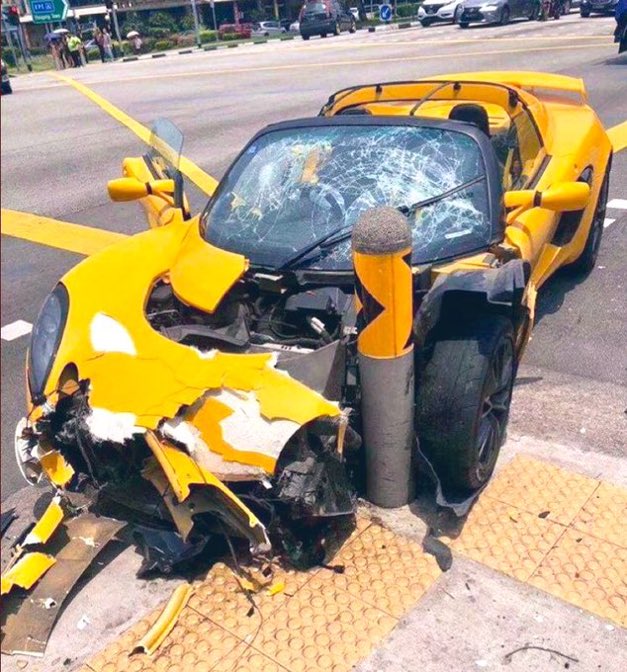
The what and why in a single video:
Over to Monaco🇲🇨 where we have exclusive footage of bollards saving lives.#WorldBollardAssociation
— World Bollard Association™ (@WorldBollard) March 12, 2023
pic.twitter.com/ESfwsI3EId
The above video is a tweet from @worldbollard, here’s a still from the video. Click to view the original video:
It’s very possible that the person just barely visible at the end of the video would have been struck had the bollard not been there, and it’s obvious how those bollards create a ‘shadow’ or ‘eddy’ of safety, from the passing vehicles. Here’s another look:
A bollard is:
any sort of physical barricade strong enough, shaped in such a way, that if a vehicle tries to overlap with the bollard in location, intentional or not, the vehicle cannot cross. Sometimes they’re built into the physical environment, sometimes not. They can be movable or not. Large and intrusive, or not.
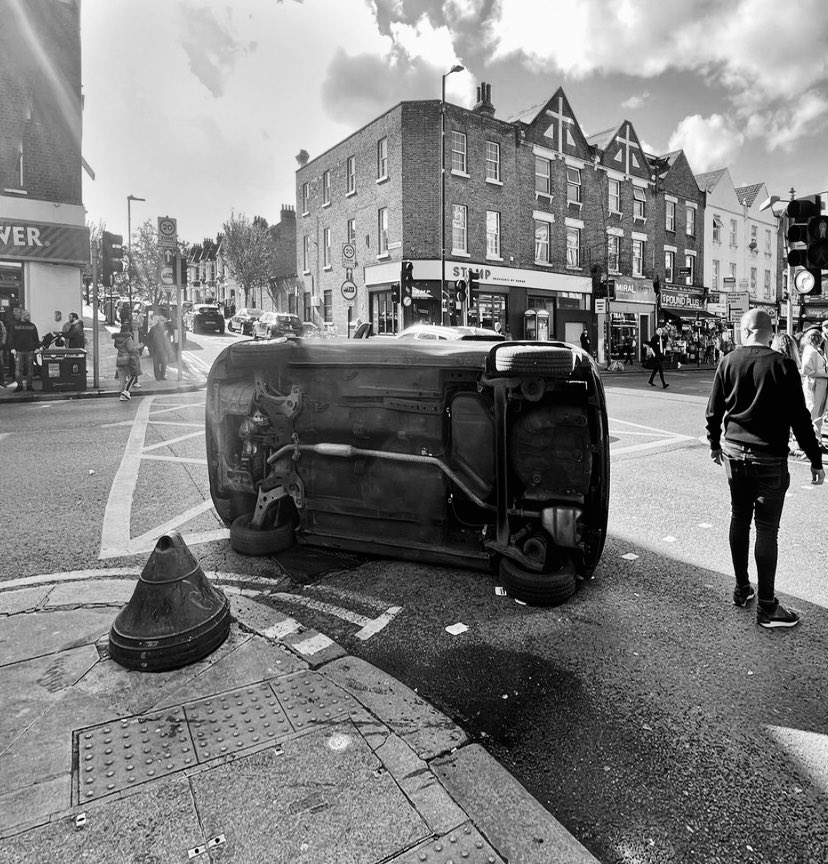
source: @worldbollard twitter account
In the words of a local city engineer’1, as he was explaining why a bollard placed near where pedestrians congregate to cross a large roadway would be inappropriate:
Barriers (bollards, guardrail, etc.) are considered for installation if the result of a vehicle striking the barrier will be less severe than hitting the unshielded object.
Less severe for who? Like, it totally makes sense to evaluate severity of a vehicle striking a barrier vs there not being a barrier. That’s the whole point of the bollard existing, to protect people/things from vehicles.
A placement like this makes intuitive sense, when run through the lense of protecting a space from cars. Here’s outside of a school, solving the problem of people sometimes parking their cars where they shouldn’t be:
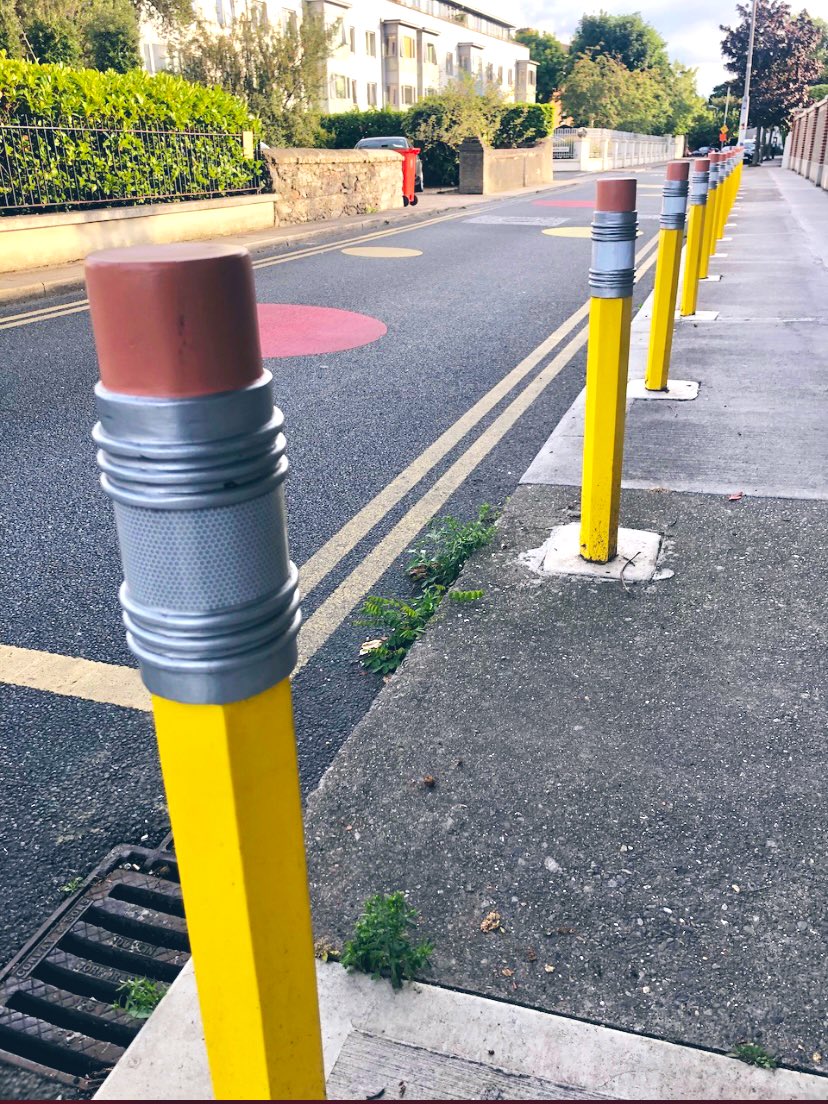
These bollards are also cute. If one could install ten times as many bollards as they otherwise have around them, and make one or two of them cute like a pencil bollard, I think everyone might be pleased.
source: @worldbollard twitter account
You’ll never unsee this:
👉 Take another look at where american municipalities put the guardrail. Quoting the author:
You see guardrail everywhere. It protects drivers from hitting hard objects by bouncing cars back into their proper place. But public works and transportation departments routinely install guardrails on the “wrong” side of a sidewalk.
Guardrails bring good fortune to motorists, but not for the unlucky people using the sidewalks.
Imagine pushing a stroller or walking the dog when an out-of-control vehicle, careening towards an object is saved by the guardrails, but you’re the innocent casualty. This engineering malfeasance is directly related to “clear zones”. The Federal Highway Administration says:
By creating Clear Zones, roadway agencies can increase the likelihood that a roadway departure results in a safe recovery rather than a crash, and mitigate the severity of crashes that do occur. - Federal Highway Administration guidance on ‘clear zones’
Once you’re aware of how engineers misuse the clear zone and put pedestrians at risk, you’ll see it everywhere. Intelligent, credentialed professionals do this all the time all across the country. Not only are they getting away with wildly dangerous behavior, it doesn’t even phase them.
(emphasis added) 🤯
I generally dislike every mile I have to drive on American roads in a car. I don’t perceive the roads to be nearly as safe as some others, but some of those who tell me driving is fine are 1) unsafe drivers themselves, and 2) they seem nearly professionally dissociated from the experience.2
Please, please stop evaluating local transportation administrations as competent. I’ve hung out with these people, gone on walks with them, driven around with them, listened to them get excited about a new pedestrian affordence they’ve installed, and the lack of awareness and close-mindedness (which is obviously necessary to sustain a shitty system creaking into it’s 100th year of existence) is stunning. Someone wrote a book titled Killed By A Traffic Engineer: Shattering the Delusion that Science Underlies our Transportation System about this. It’s not defecting from any group to evaluate this as the case.3
I’ve waltzed into city planners offices, the offices of traffic engineers (because I am curious, pushy, opinionated, and can ‘just looking around’/bumble my way into all sorts of interesting places) and my jaw has dropped to hear the things they say, seriously, to someone else. Now I first search for signs of aliveness when interacting with traffic people, and if I cannot find a sign of aliveness, I avoid allowing hope to grow in my heart. 4
I get myself in hot water by suggesting they cherry pick different parts of it. If you’re a traffic engineer, know that your own MUTCD allows you to use your own ‘engineering judgement’, and you don’t even have to document it. I wrote a section about why this traffic bean junction concept is MUTCD compliant: the traffic bean -> on mutcd compliance
The main feature of a bollard is stated, by city engineers as a reason they cannot be placed anywhere near roads. “Bollards are not crashworthy” is a strange way to say “bollards reliably stop vehicles”. American road engineers declare that things near roads need to be soft and spongy (like people!) to avoid ‘injuring’ cars. It really hurts oneself to take them seriously, the logic is so convoluted.
Here’s a bollard, bollarding:
Would you say the bollard is ‘crashworthy’? I’d say by definition, yes! Look at how well it stood up to a crash!
American traffic engineering standards, as implemented by supremacists who built urban highway through neighborhoods, with the express goal of displacing the people in that neighborhood, says that ‘crashworthy’ means it wouldn’t hurt the occupant of the car. The original cars were much less cushioned with airbags and crumple zones than they are now, and they were driven by people who were wealthy, nobility-adjacent.
Cars are now driven by people who are not wealthy, but the original patterning still lives onward in the law.
What are not bollards? #
It’s tricky to hit the right emotional tone of why bollards matter. Sometimes it seems academic and dry, sometimes its very visceral and raw.
Where there are not bollards, there are careening, speeding vehicles, and often enough death and destruction.
To park a vehicle, one needs to press the correct pedal. When people are driving unfamiliar vehicles, or rushed, or whatever, sometimes the wrong pedal gets pushed. Would you suggest that this small error should result in death of people and the elimination of businesses and buildings?
Here’s a vehicle coming to almost a complete stop, then accelerating into and through an entire building into the parking lot beyond.
Every time I ‘feel’ a vehicle pointed at me, even when I’m inside of a building, I’m aware that if the driver has a heart attack or makes a small mistake, I might be staring at them from the end of their hood, above a crushed pelvis. “Oh well, one espresso please.”
Please watch the following video. click here if the image isn’t loading right - it goes to reddit:
I take issue with the video caption, I’d rather it be:
vehicle operator makes error when parking
The point is clear, though. Vehicles are strong, and can accelerate from a stop into, through, and out of, at least some buildings, if the driver presses firmly on the wrong pedal.
Lets look at another example.
When there are not bollards, in areas where people are promised safety, even if everyone behaves correctly, there are still failures. For example…
A friend/her fiance were walking down a sidewalk, a passing speeding/racing car hit another car, bounced onto the sidewalk, killed her and almost killed her fiance. The city traffic engineer said nothing could be done while the industry openly states that because bollards work, they cannot be used to protect non-car spaces from the mistakes of car drivers. 5
Once, a widely respected member of a local software development community and their partner (also a widely respected member of the same community) were walking on a sidewalk in California one night a few years ago. Far from them, a speeding car struck another car of course careened through the sidewalk. Both friends were hit by the car. She was killed instantly, he was knocked unconscious, woke up days later to find out the news. The language in the article is full of ‘this was an unavoidable tragedy’, though i think it’s obvious a local city engineer ought to be held criminally liable for their neglect.
This video below shows a very similar style of ‘car accident’ that killed and injured these friends, but in this video the spaces along the road are rendered safer by the bollards.
Is there anything more wonderful than watching a BMW bounce off bollards and cartwheel down the road?#WorldBollardAssociation
— World Bollard Association™ (@WorldBollard) May 13, 2024
🎥@CrimeLdn
pic.twitter.com/XOD1zQb1Bf
This blaming the victim narrative is why ‘jaywalking’ is a propagandist legal fiction, by the way.
The concept of jaywalking blames victims of vehicular homicide for their own deaths. Very convenient for a settler-colonialist oppressor class. It’s a lynchpin to the following process. Without the concept of ‘jaywalking’, and the police using violence to enforce it, the following process wouldn’t be able to complete, it would get stuck at step 3.
How to use unsafe roads to clean/cleanse a neighborhood #
- declare that the road (even an empty road) is more important than anything else.
- Demolish neighborhoods to add roads.
- Once the road is there, further degrade the people of the neighborhood by declaring/enforcing ‘not only must this road be here, but your physical body cannot be anywhere near this road if someone in a car is within earshot. Even though they started their journey far from here, and are going to continue far from here, they get more priority over your front yard than you do’
- Once the neighborhood has stewed in this toxic mess for a while, help shuffle the lots to private developers for cheap, they’ll knock down that housing and replace it with something conforming, with conforming people.
This is the same tactic israeli settlements use to displace palestinians from their lands!
American suburban development and israeli settlement development follow very similar patterns, are rooted in the same energy.
Israeli bulldozers knocking down palestinian homes is very similar to american bulldozers knocking down immigrant neighborhoods for urban highways and parking lots. supremacists called it ‘slum clearance’. I wrote parking minimums as ethnic cleansing and want to write sometime about the way american municipalities pioneered/refined the tactics of bulldozer-led ethnic cleansing, and that gets only slightly modified before being reused in palestine.
Because not only was it entirely preventable, it was also statistically inevitable. Not putting bollards where they need to be is like not only not wearing a seatbelt when driving, but arguing that seatbelts should not be available in cars because usually they’re not needed.
A bollard is something like a seatbelt for someone outside of the vehicle.
When and where there are not bollards, often enough, there are cars.
Injury on 7-Eleven property costs $91 million #
So… this is the sort of devastation done to a community that everyone would obviously want to prevent. And this exact pattern plays out many times a day.
Even the american legal system sometimes understand bollards and appreciate that sometimes a need to assign honest blame to someone, the ‘responsible corporate entity with a pocketbook’ has a responsibility to people who are using their spaces, and a perceived failure to provide a measure of structural something.
That title is sensationalized, sort of. Really tragic for the involved person. It could be re-written “in which a vehicle operator pressed the gas instead of the brake, the vehicle pinned-and-maimed man passing between at that exact moment”.
It’s a normal occurrence.
If you watch some of the videos elsewhere on this page, you can understand the ‘accident mechanics’, and can appreciate how if there were bollards in a certain spot, the harmed/maimed passer-by would not have been maimed.
Notice down below how often this kind of thing happens. I hope there’s bollards at every 7/11 now. 6
A 57-year-old suburban man who became a double amputee after a car pinned his legs against the front of a Bensenville 7-Eleven will receive a $91 million payout from the convenience store chain
In a moment, you’ll see the kinds of vehicle-strikes-building results this refers to.
The case was the first in which attorneys had access to some 15 years of reports from 7- Eleven, which identified some 6,253 storefront crashes at 7-Eleven stores across the country, Power said. Data from a previous lawsuit against the company identified another 1,525 crashes between 1991 and 1996.
Who in the story do you think uttered the following?
It is important to note that this unfortunate accident was caused by a reckless driver who pled guilty, and this store followed all local building codes and ordinances.
That was the legal representation of 7/11, but you can also hear the local city manager or city engineer saying ‘it was not my fault either!’. (“followed all local building codes and ordinances”)
Lots of people like to suggest flexposts as a ‘useful’ or ‘improved’ effort over nothing. I emphatically disagree, as a flexposts promises something it cannot deliver:
“Bollards are too expensive. Flex posts will be just as good…”#WorldBollardAssociation
— World Bollard Association™ (@WorldBollard) October 7, 2023
pic.twitter.com/P8gnL25aNq
I would accept flexposts only if ~they were frequent, and~ one out of every ten was a visually-indistinguishable, placed-at-random, real steel bollard, or at least something that would cause some real issue if impacted. a bell bollard made out of concrete, a tree, a fence post.
If we’ve said it once, we’ve said it a thousand times…flex posts are SHIT.#WorldBollardAssociation
— World Bollard Association™ (@WorldBollard) September 23, 2023
pic.twitter.com/l0800LpAdv
Carl was a frequent customer of the Bensenville store, and most days would walk a few blocks from an apartment he shared with his three sons to buy his morning coffee…
[the morning of this tragic-yet-statistically-inevitable systemic failure] Carl’s ride was running late, and a man pulling into a parking space in front of the store stepped on his car’s accelerator instead of the brake. The car lurched over the curb, across a sidewalk and pinned Carl against the storefront, causing injuries that would require the amputation of both his legs above the knees. Another driver had crashed into the front of the same store 16 months earlier, Power said.
What does not bollards look like #
In the context of ‘bollards as protecting store-fronts from cars’, sort of akin to a physical insurance policy, here’s what moving vehicles, through stores, can look like.
Holy shit. A car smashed through a cafe while they were recording a podcast. 😳 pic.twitter.com/NBJ6h4cYjl
— Fifty Shades of Whey (@davenewworld_2) March 6, 2023
I wonder what losses the involved parties were able to recoup. Presumably insurance would make partial financial repairs, but it would all be at great opportunity cost, hassle, sadness, anger.
Even a rock, obtained functionally for free, could have fully prevented this. Again, no one’s fault, but it hurts to see damage accrue.
👉 driver presses wrong peddle when parking outside store
I dislike the caption. ‘[^forgets] [^forgets]: possibly playing into subtle supremacy saying “woman forgets…” Why not person? Or very physically ill driver? or “driver in unfamiliar rental car”? or “driver thinking they were pressing the break unintentionally pressed the gas and…” or “while thinking they were in reverse, the driver pressed the gas and…”
I’m not into punishment energy. For real for real. I need to finish writing https://josh.works/punishment, to explain. for now, “the concept of retributive violence is a gussied up version of nobility and chivalry ethics. Which was a strange group of people’s attempts to justify their own domination of others.
There’s more to be said about punishment regimes. There’s entire modes of thoughts/ways of being/concepts of the world that operate entirely without punishment, in a way that would feel sorta unrecognizable to someone who’s grown up around the american criminal justice system, and believed some of what is said about it.
currently not written but I’m close on a draft of something.
It should say:
vehicle operator makes error when parking
This sort of incident would be perfectly prevented by bollards like this:
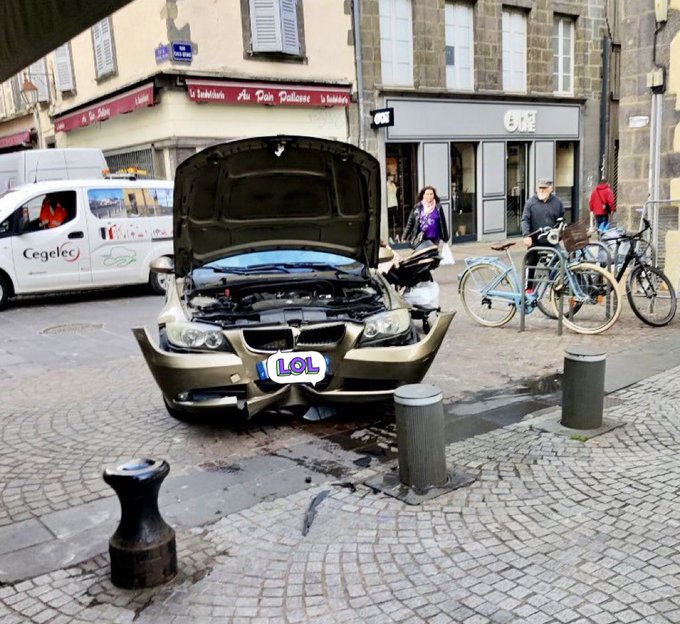
As a reminder, flex posts are not bollards, they’re… lies, drafting on the idea of bollards:
Flex posts kill.
— World Bollard Association™ (@WorldBollard) September 9, 2023
Bollards save lives.#WorldBollardAssociation
pic.twitter.com/dHpzlLHbxx
If we’ve said it once, we’ve said it a thousand times…flex posts are SHIT.#WorldBollardAssociation
— World Bollard Association™ (@WorldBollard) September 23, 2023
pic.twitter.com/l0800LpAdv
“But what I think of as bollards are not pretty” #
Great, lets grow our imaginations:
I live in the Cheesman park area in Denver, there’s already plenty of bollards and bollard-passing objects (trees, light poles, boulders) and I’d love for there to be many more, following similar-enough patterns of what is already placed, with some reasonable, obvious iteration.
17th ave intersection fix with bollards and a traffic bean #
Bollards are sorta fierce. Or, they can be. In the case of what we’ve been discussing recently, speeds could also be brought down reliably from an occasional max of 70 mph to a lot, lot less.
The traffic bean concept lives here: my substack about poynton, uk
The application of that sorta shape to an intersection I know well, and prototypical of an average, complex intersection:
traffic bean for colefax/park/franklin junction
sound good with you?
Links #
- World Bollard Association twitter account
- Bollards to do cars what cars do to people…
- 1 Dead, 14 Injured After [vehicle operator presses wrong button]
- reversed through his own garage, crashed through a condo that was going on the market friday
- Take another look at where they put the guardrail
- police officer takes a slow right turn… then continues and drives onto the sidewalk, lives saved by light post
- Protecting staff, patients and visitors from vehicle assault
Bollards are like icebergs. Some bollards are not placed deep into the ground or very strong, and might deform under a vehicle impact. Some bollards are quite firmly placed.
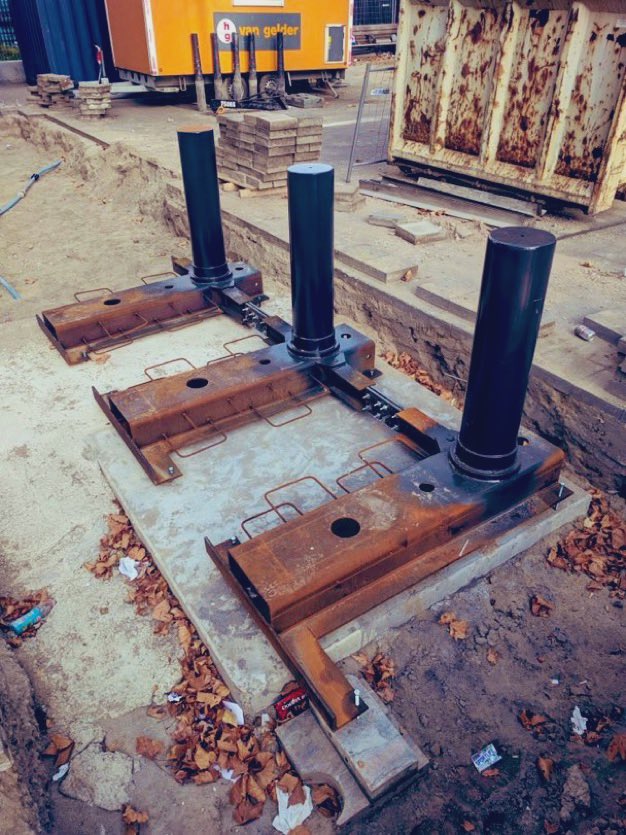
Footnotes #
-
This was the city engineer of a local municipality, and I’ve had direct, 1:1 conversations with the city engineer in {another municipality in which I lived/owned property} after parents in a local neighborhood demanded a meeting about the dangerous road that their kids were walking to school alongside. The engineer said ‘due to traffic count data, the road does not qualify for any state-funded improvements’, which is obviously a 🖕🏻 to the kids he was failing. There are many cheap was to slow traffic without speed bumps, police, cameras, signs, and half million dollar increments of spending, but people committed to bad plans will use their poor imagination as a reason for why something must not be done. He gave me permission to run my own road experiments, though, which I did, and it worked great. I’ve since put together a page dedicated to some of my ‘coning adventures’ Alternatively, here’s some direct links to some videos of: defining a pedestrian crossing better, causing vehicles to pick a path, cones outside of a coffee shop, reduced noise from passing cars by at least 10 db, maybe more. Safey way up, too - drone footage, first pass on a really, really dangerous, wide, fast junction in northern colorado. ↩
-
“Driving isn’t that bad, Josh…” Click here to open youtube with the search query
car crash compilation. Spend a few minutes looking around. These are relatively tame, permissible on youtube. Still horrifying. Add in some first hand and near-first-hand experiences with other sorts of related car experiences, or first-hand experience with other people’s car-crash related deaths, and one can appreciate trying to minimize exposure to this particular hazard. Especially highways (because of the high speeds) and especially anything where incoming traffic can be just… pointing at you, with everyone hoping it works out, continuously. It’s the oposite of an appreciation that complex systems exist. ↩ -
To interact with local transportation administrations requires that you 1) self-abandon by allowing oneself to be treated in a de-dignifying manner, and 2) maintain performative allegiance to a pseudo-scientific view of the world. ↩
-
Engineering type people act like their work is inscrutable, but it’s not. They mostly implement cherry picked sections of this arcane book of religious utterances known as the ‘Manual of Uniform Traffic Control Devices’. (orange road signs. those are called ‘traffic control devices’. It takes itself so seriously) ↩
-
Again, I say this, because when talking to more than one ‘city traffic engineer’, they all regurgitate the sentiment that gives us the plastic flex post - they say ‘nothing can be placed near to the path of a vehicle unless it is crashworthy - this means it gets out of the way, or deforms gracefully to a vehicle, in case it’s struck. The entire point of a bollard is that it makes the vehicle deform, while the bollard doesn’t move at all. It’s proximity to the roadway is immaterial. It casts a shadow of safety and comfort behind it, for the people being actively protected by it from the danger of passing traffic. ↩
-
Since I first wrote this, I’ve seen a few 7/11s, both in my neighborhood near Cheesman park in Denver, and elsewhere when I pass them by, I notice if there’s bollards, what they look like, etc. If they’re pretty, how they’re constructed, what color they’re painted, what particular ‘positive outdoor space’ they create. It’s a mix, but I’ve never seen a bell bollard. ↩
